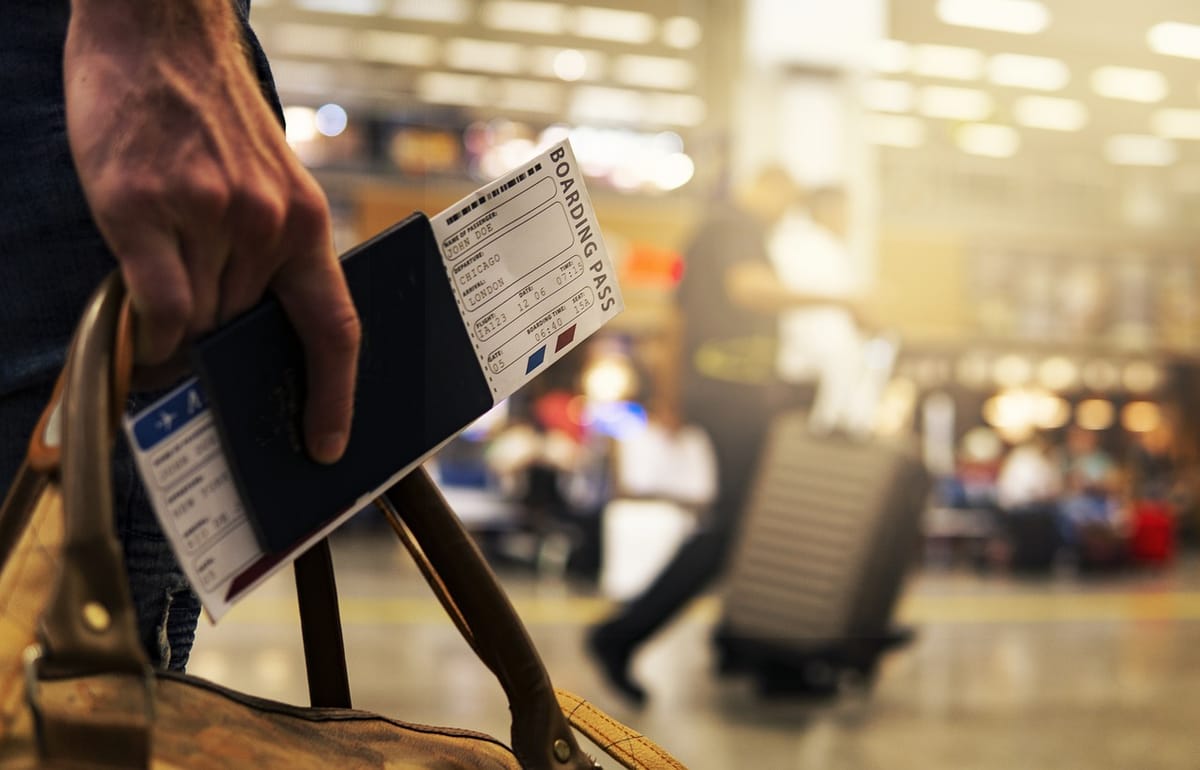Currency Dynamics | Exploring the Intersection of Tourism and Exchange Rate Fluctuations
Explore the intricate relationship between currency dynamics and tourism in this comprehensive article. Delve into the impact of exchange rate fluctuations, economic implications, and factors influencing currency valuation

As a seasoned economist and avid traveler, I have always been fascinated by the intricate relationship between currency dynamics and the tourism industry. In this comprehensive article, we will delve into the multifaceted world of currency dynamics in the context of tourism, exploring the impact of exchange rate fluctuations, economic implications, factors influencing currency valuation, demand and supply dynamics of foreign exchange, effects on international spending, correlation with tourism revenue, seasonal variations, the role of currency conversion, and market analysis with future trends. Join me in unraveling the complex web of currency dynamics and its profound influence on the travel industry.
Understanding Currency Dynamics in the Tourism Industry
Currency dynamics play a pivotal role in shaping the landscape of the tourism industry, exerting a profound influence on travel patterns, consumer behavior, and economic outcomes. As the primary vehicle for international transactions, exchange rates serve as the fundamental link between different currencies, directly impacting the cost of travel, purchasing power, and overall tourism demand. The intricate interplay between currency dynamics and tourism underscores the importance of comprehending the underlying mechanisms driving exchange rate fluctuations and their far-reaching implications on the global travel sector.

The intricate dance of currency dynamics in the tourism industry is a reflection of the broader economic forces at play, encompassing government policies, central bank interventions, geopolitical events, and market sentiment. The fluid nature of exchange rates introduces a layer of complexity to the tourism landscape, as travelers and industry stakeholders navigate the ever-shifting terrain of currency valuations. By unraveling the underlying dynamics of exchange rate movements and their implications for tourism, we can gain a deeper appreciation of the interconnected nature of the global economy and the travel industry.
The intrinsic link between currency dynamics and the tourism industry underscores the need for a nuanced understanding of exchange rate fluctuations and their impact on travel behavior, consumer choices, and destination preferences. By delving into the intricate web of currency dynamics, we can gain valuable insights into the underlying drivers of exchange rate movements and their profound implications for the tourism sector, paving the way for informed decision-making and strategic planning in an increasingly interconnected world.
The Impact of Exchange Rate Fluctuations on Tourism
Exchange rate fluctuations wield a significant influence on the tourism industry, shaping the cost of travel, international competitiveness, and overall consumer demand. The dynamic nature of exchange rates introduces a layer of uncertainty for travelers and industry stakeholders, as currency movements directly impact the affordability and attractiveness of various destinations. Fluctuations in exchange rates can lead to substantial shifts in tourism flows, as travelers recalibrate their plans in response to changing currency valuations, thereby reshaping the global tourism landscape.
The impact of exchange rate fluctuations on tourism extends beyond the realm of consumer behavior, permeating into the economic fabric of destination countries and the broader global travel ecosystem. Currency movements can exert profound effects on the profitability of tourism enterprises, the competitiveness of destinations, and the overall economic well-being of tourism-dependent economies. By dissecting the intricate relationship between exchange rate fluctuations and tourism, we can glean valuable insights into the far-reaching implications of currency dynamics on the global travel sector and the multifaceted interplay between economic forces and travel patterns.
The dynamic interplay between exchange rate fluctuations and tourism underscores the need for a comprehensive understanding of currency dynamics and their implications for the travel industry. By examining the multifaceted impact of exchange rate movements on tourism, we can gain a deeper appreciation of the intricate web of economic relationships underpinning the global tourism ecosystem, paving the way for informed decision-making and strategic planning in an increasingly interconnected and dynamic environment.
Economic Implications of Currency Exchange in the Travel Industry
The economic implications of currency exchange in the travel industry are far-reaching, encompassing a spectrum of macroeconomic variables, consumer behavior, and industry dynamics. Exchange rate fluctuations directly influence the cost of travel, purchasing power, and international competitiveness, thereby shaping the economic landscape of the tourism sector. By dissecting the economic implications of currency exchange in the travel industry, we can unravel the intricate web of relationships between exchange rates, tourism demand, and the broader economic fabric of destination countries and the global travel ecosystem.
The economic implications of currency exchange in the travel industry extend beyond the realm of consumer behavior, permeating into the profitability of tourism enterprises, the competitiveness of destinations, and the overall economic well-being of tourism-dependent economies. Exchange rate fluctuations can lead to pronounced shifts in tourism flows, as travelers recalibrate their plans in response to changing currency valuations, thereby reshaping the economic dynamics of the global tourism landscape. By delving into the economic implications of currency exchange in the travel industry, we can gain valuable insights into the multifaceted interplay between currency dynamics and the broader economic forces shaping the global travel sector.
The economic implications of currency exchange in the travel industry underscore the need for a comprehensive understanding of exchange rate fluctuations and their profound impact on the tourism sector. By examining the economic ramifications of currency exchange, we can gain a deeper appreciation of the intricate web of economic relationships underpinning the global tourism ecosystem, paving the way for informed decision-making and strategic planning in an increasingly interconnected and dynamic economic environment.
Factors Influencing Currency Valuation in Tourism
A myriad of factors exert influence on the valuation of currencies in the context of tourism, encompassing economic fundamentals, market sentiment, geopolitical events, and government policies. The dynamic interplay of these factors shapes the currency dynamics in the tourism industry, exerting a profound influence on travel patterns, consumer behavior, and economic outcomes. By dissecting the factors influencing currency valuation in tourism, we can gain valuable insights into the underlying drivers of exchange rate fluctuations and their implications for the global travel sector.
Economic fundamentals, including inflation rates, interest rates, and economic growth, play a pivotal role in shaping the valuation of currencies in the tourism industry. Market sentiment and investor perceptions also exert a significant influence on exchange rate movements, as shifts in confidence and risk appetite impact the demand and supply dynamics of foreign exchange. Geopolitical events and government policies introduce an additional layer of complexity to currency dynamics, as political developments and policy decisions can lead to pronounced fluctuations in exchange rates, thereby shaping the cost of travel and international competitiveness.
By delving into the multifaceted factors influencing currency valuation in tourism, we can gain a deeper appreciation of the underlying drivers of exchange rate movements and their implications for the travel industry. Understanding the intricate web of economic, market, and geopolitical forces shaping currency dynamics is essential for navigating the complex terrain of the global tourism landscape, paving the way for informed decision-making and strategic planning in an increasingly interconnected and dynamic environment.
Analyzing the Demand and Supply Dynamics of Foreign Exchange in Tourism
The demand and supply dynamics of foreign exchange in the context of tourism are a reflection of the intricate interplay between consumer behavior, industry dynamics, and economic forces. Travelers' demand for foreign exchange is driven by a myriad of factors, including the cost of travel, destination preferences, and purchasing power, while the supply of foreign exchange is influenced by a spectrum of variables, such as exchange rate movements, capital flows, and government policies. By analyzing the demand and supply dynamics of foreign exchange in tourism, we can gain valuable insights into the underlying mechanisms shaping currency dynamics and their implications for the travel industry.

Consumer behavior plays a pivotal role in driving the demand for foreign exchange in the tourism industry, as travelers seek to convert their local currency into foreign currencies to facilitate international transactions. Exchange rate movements directly impact the purchasing power of travelers, influencing their demand for foreign exchange and travel spending patterns. On the supply side, the dynamics of foreign exchange are influenced by a spectrum of variables, including exchange rate fluctuations, capital flows, and government policies, which shape the availability and cost of foreign currencies in the market.
By dissecting the demand and supply dynamics of foreign exchange in tourism, we can gain a deeper understanding of the intricate relationships between consumer behavior, industry dynamics, and economic forces shaping currency dynamics in the travel industry. Analyzing the underlying mechanisms driving the demand and supply of foreign exchange is essential for comprehending the complex terrain of currency dynamics and its implications for the global tourism sector, paving the way for informed decision-making and strategic planning in an increasingly interconnected and dynamic economic environment.
Currency Fluctuations and Their Effects on International Spending
Currency fluctuations exert a profound influence on international spending patterns, shaping the cost of travel, purchasing power, and overall consumer behavior. The dynamic nature of exchange rates introduces a layer of complexity for travelers, as currency movements directly impact the affordability and attractiveness of various destinations. Fluctuations in exchange rates can lead to substantial shifts in international spending, as travelers recalibrate their plans in response to changing currency valuations, thereby reshaping the global tourism landscape and consumer choices.
The effects of currency fluctuations on international spending extend beyond the realm of consumer behavior, permeating into the economic fabric of destination countries and the broader global travel ecosystem. Currency movements can lead to pronounced shifts in travel patterns and destination preferences, as travelers adjust their spending in response to changing currency valuations. By examining the effects of currency fluctuations on international spending, we can gain valuable insights into the multifaceted interplay between exchange rate movements, consumer behavior, and the broader economic dynamics of the global travel sector.
The dynamic interplay between currency fluctuations and international spending underscores the need for a comprehensive understanding of currency dynamics and their implications for the tourism industry. By delving into the effects of currency fluctuations on international spending, we can gain a deeper appreciation of the intricate web of economic relationships underpinning the global tourism ecosystem, paving the way for informed decision-making and strategic planning in an increasingly interconnected and dynamic economic environment.
Tourism Revenue and Its Correlation with Exchange Rate Fluctuations
Tourism revenue is intricately linked to exchange rate fluctuations, as currency movements directly impact the economic performance of tourism-dependent economies, the profitability of tourism enterprises, and the overall attractiveness of destinations. Fluctuations in exchange rates can lead to pronounced shifts in tourism revenue, as the value of foreign earnings fluctuates in response to changing currency valuations, thereby reshaping the economic dynamics of destination countries and the global travel ecosystem. By unraveling the correlation between tourism revenue and exchange rate fluctuations, we can gain valuable insights into the multifaceted interplay between currency dynamics, economic outcomes, and the broader tourism landscape.
The correlation between tourism revenue and exchange rate fluctuations underscores the need for a nuanced understanding of currency dynamics and their implications for the economic performance of tourism-dependent economies. By examining the correlation between tourism revenue and exchange rate fluctuations, we can gain a deeper appreciation of the intricate web of economic relationships underpinning the global tourism ecosystem, paving the way for informed decision-making and strategic planning in an increasingly interconnected and dynamic economic environment.
Seasonal Variations and Currency Dynamics in the Tourism Sector
Seasonal variations exert a significant influence on currency dynamics in the tourism sector, as travel patterns, consumer behavior, and industry dynamics undergo pronounced shifts in response to changing seasons and holiday periods. The ebb and flow of tourist arrivals, spending patterns, and destination preferences introduce a layer of complexity to currency dynamics, as exchange rate fluctuations interact with seasonal variations to shape the economic landscape of the tourism industry. By examining the interplay between seasonal variations and currency dynamics in the tourism sector, we can gain valuable insights into the underlying mechanisms driving exchange rate movements and their implications for the global travel sector.
Seasonal variations in the tourism sector give rise to pronounced fluctuations in currency dynamics, as travel demand and industry dynamics respond to changing patterns of tourist arrivals and spending behavior. Exchange rate movements directly impact the cost of travel and the purchasing power of tourists, influencing their spending patterns and destination preferences during different seasons. By dissecting the interplay between seasonal variations and currency dynamics, we can gain a deeper understanding of the intricate relationships between travel patterns, consumer behavior, and economic forces shaping currency dynamics in the tourism industry.
The dynamic interplay between seasonal variations and currency dynamics in the tourism sector underscores the need for a comprehensive understanding of exchange rate fluctuations and their implications for the travel industry. By delving into the interplay between seasonal variations and currency dynamics, we can gain a deeper appreciation of the multifaceted relationships underpinning the global tourism ecosystem, paving the way for informed decision-making and strategic planning in an increasingly interconnected and dynamic economic environment.
The Role of Currency Conversion and Its Impact on the Balance of Payments
Currency conversion plays a pivotal role in shaping the balance of payments in the context of tourism, as international transactions, trade balances, and capital flows are influenced by the dynamics of currency exchange. The process of converting local currency into foreign currencies and vice versa introduces a layer of complexity to the balance of payments, as exchange rate fluctuations directly impact the value of international transactions and the overall economic performance of tourism-dependent economies. By unraveling the role of currency conversion and its impact on the balance of payments, we can gain valuable insights into the multifaceted interplay between currency dynamics, economic outcomes, and the broader tourism landscape.
The role of currency conversion in shaping the balance of payments underscores the need for a nuanced understanding of exchange rate fluctuations and their implications for the economic performance of tourism-dependent economies. By examining the role of currency conversion and its impact on the balance of payments, we can gain a deeper appreciation of the intricate web of economic relationships underpinning the global tourism ecosystem, paving the way for informed decision-making and strategic planning in an increasingly interconnected and dynamic economic environment.
Market Analysis and Future Trends in Currency Dynamics for Tourism
A comprehensive market analysis of currency dynamics for tourism provides valuable insights into the current landscape and future trends shaping the global travel sector. By examining the market forces, economic indicators, and industry trends, we can gain a deeper understanding of the factors driving exchange rate fluctuations and their implications for the tourism industry. Furthermore, by forecasting future trends in currency dynamics for tourism, we can anticipate the evolving economic landscape, consumer behavior, and industry dynamics, thereby paving the way for informed decision-making and strategic planning in an increasingly dynamic and interconnected global environment.
The future trends in currency dynamics for tourism are shaped by a myriad of factors, including economic developments, geopolitical events, market sentiment, and government policies. By conducting a comprehensive market analysis and forecasting future trends, we can gain valuable insights into the evolving landscape of currency dynamics in the tourism industry, thereby positioning ourselves to adapt to the changing economic environment and leverage emerging opportunities in the global travel sector.
As we conclude this comprehensive exploration of currency dynamics in the tourism industry, it is evident that exchange rate fluctuations exert a profound influence on the global travel sector, shaping travel patterns, consumer behavior, and economic outcomes. By delving into the multifaceted world of currency dynamics and its intersection with tourism, we have gained valuable insights into the intricate relationships between exchange rates, tourism demand, and the broader economic fabric of destination countries and the global travel ecosystem. As we navigate the ever-shifting




